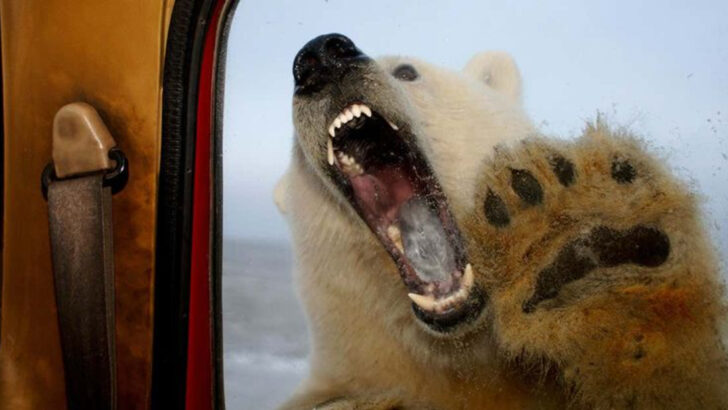They can kill you—but they usually don’t care to. These animals pack venom, claws, fangs, or pure muscle. One wrong move, and things could get ugly fast. But the truth? Most of them would rather run than rumble. They aren’t stalking you. They’re surviving. And if you respect their space, you’ll probably never see the dangerous side. Still, it’s good to know who’s who. Here are 25 wild animals that could end you in seconds—yet spend most of their lives trying to avoid a fight.
Polar Bear
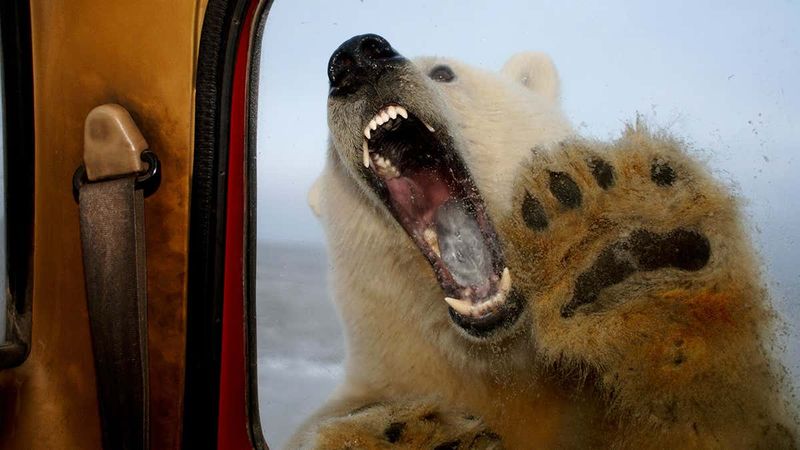
With their snowy white fur and powerful build, polar bears are majestic creatures of the Arctic. They are the largest terrestrial carnivores, often seen as the kings of ice and snow. Polar bears primarily hunt seals and are incredibly skilled swimmers. Despite their fearsome reputation, they tend to avoid humans unless provoked or in distress.
Their habitat is remote, making encounters rare. When they do happen, caution is imperative as these bears can be unpredictable. Climate change threatens their ice homes, adding to their challenges. Nevertheless, polar bears remain a symbol of the wild’s raw beauty.
Great White Shark
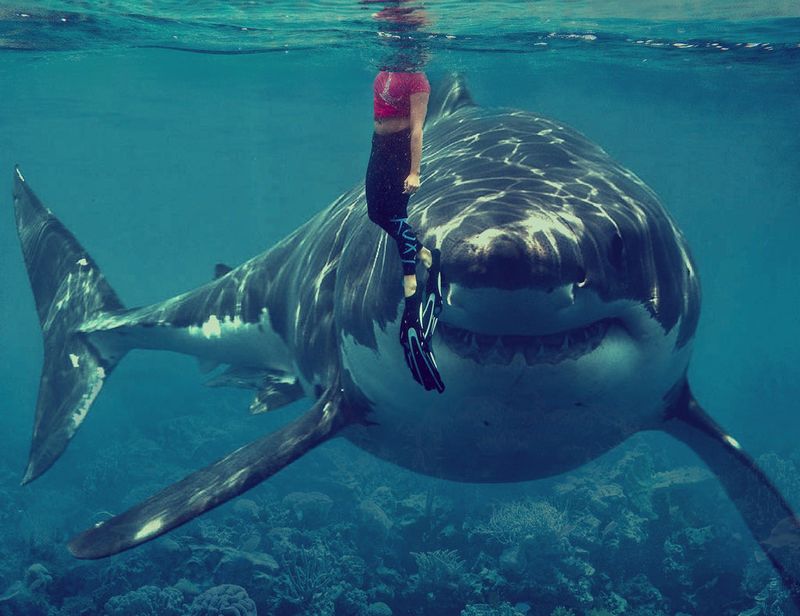
As apex predators of the sea, great white sharks inspire both fear and fascination. These sharks have a keen sense of smell and can detect blood from miles away. Despite their fearsome teeth and powerful jaws, attacks on humans are rare and often a case of mistaken identity.
Great whites are crucial to marine ecosystems, keeping populations in check. They prefer seals and fish over humans. The portrayal of these sharks in media often exaggerates their threat. Nevertheless, swimming in their territory calls for respect and awareness.
African Elephant
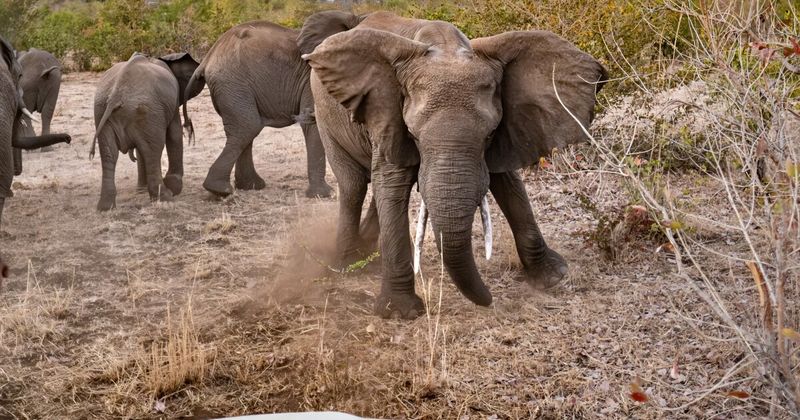
Towering over the savannah, the African elephant is both awe-inspiring and formidable. Known for their intelligence and strong family bonds, they navigate their environment with grace. Elephants are generally peaceful, using their size to deter predators and protect their young.
However, if threatened or provoked, they can become aggressive. The sheer power behind their massive tusks and trunks is enough to cause serious harm. Human-elephant conflicts often arise due to habitat encroachment. Despite their potential danger, these gentle giants play a vital role in maintaining the ecosystem.
Box Jellyfish
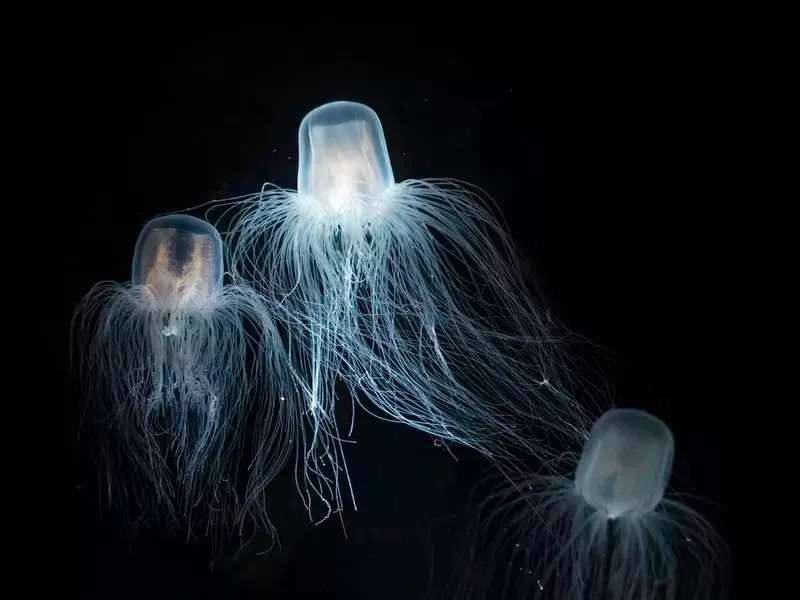
Floating serenely in the waters of the Indo-Pacific, the box jellyfish is a silent predator. Known for its potent venom, a sting can cause severe pain and even be fatal. Despite this, the jellyfish isn’t naturally aggressive toward humans.
They drift through the ocean with an elegance that belies their lethality. Beachgoers are advised to heed warnings during jellyfish season, wearing protective suits when necessary. Marine biologists work tirelessly to understand these creatures better. While their sting is one of nature’s deadliest, their presence is a reminder of the ocean’s mysteries.
Hippopotamus
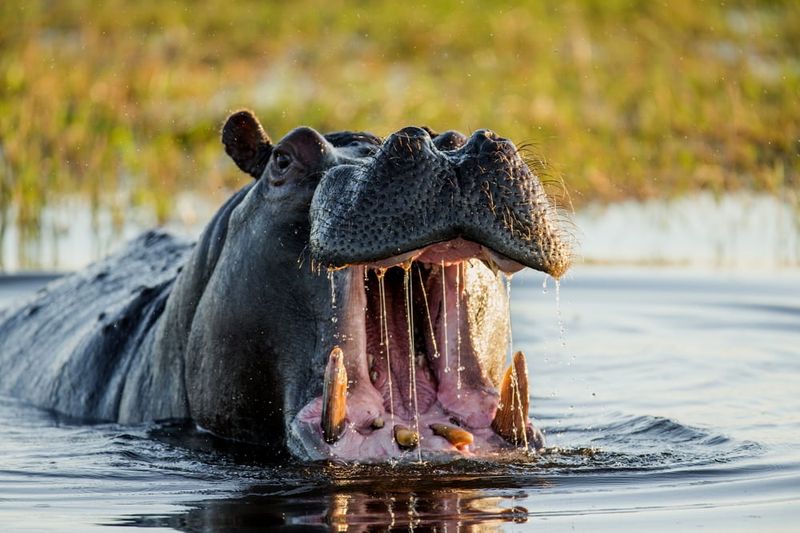
In the rivers of Africa, the hippopotamus is both a familiar and intimidating sight. Despite their rotund appearance, hippos are highly territorial and surprisingly fast on land. They are known to be one of the most dangerous animals in Africa due to their aggressive nature.
Hippos spend much of their time submerged, which helps them stay cool under the African sun. They communicate through grunts and wheezes, displaying social behaviors within their pods. Understanding their habits can prevent dangerous encounters. Even with their potential for aggression, hippos are vital to river ecosystems.
Komodo Dragon
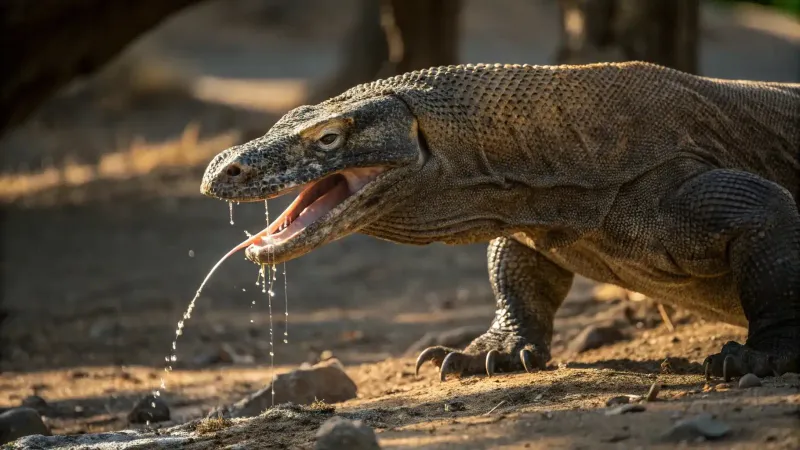
In the Indonesian archipelago, the Komodo dragon reigns supreme as the largest lizard on Earth. With their forked tongues flickering and muscular bodies, these reptiles are formidable hunters. Their saliva contains toxic bacteria, making their bites potentially deadly.
Komodo dragons typically feed on carrion but can take down prey much larger than themselves. Encounters with humans are rare, as these creatures prefer seclusion. Conservation efforts are in place to protect their dwindling populations. While they have the capability to kill, Komodo dragons are more interested in their natural prey.
Cape Buffalo
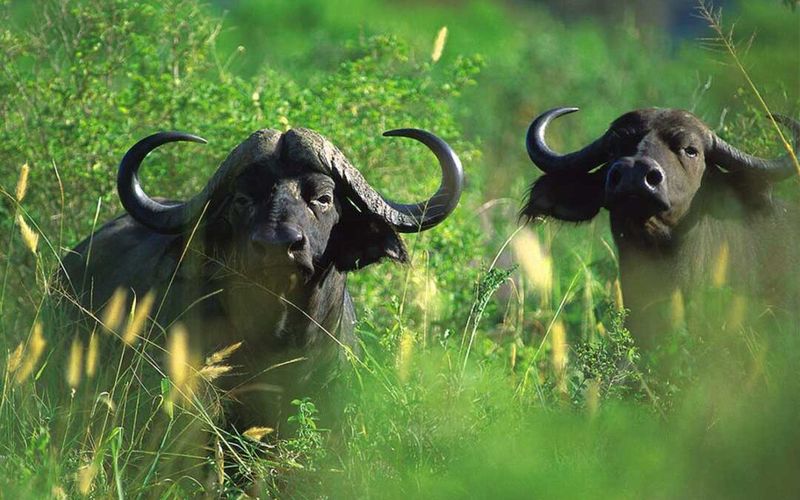
Often referred to as the “Black Death,” the cape buffalo has a reputation for unpredictability. Found in herds across Africa, these bovines are known for their massive horns and strong social structures. When threatened, they can become aggressive and charge with incredible force.
Cape buffaloes play a crucial role in their ecosystems, providing balance by grazing and interacting with other wildlife. Despite their fearsome moniker, they generally prefer to keep their distance from humans. Understanding their behavior can prevent conflicts, allowing these majestic creatures to continue thriving in the wild.
Cone Snail
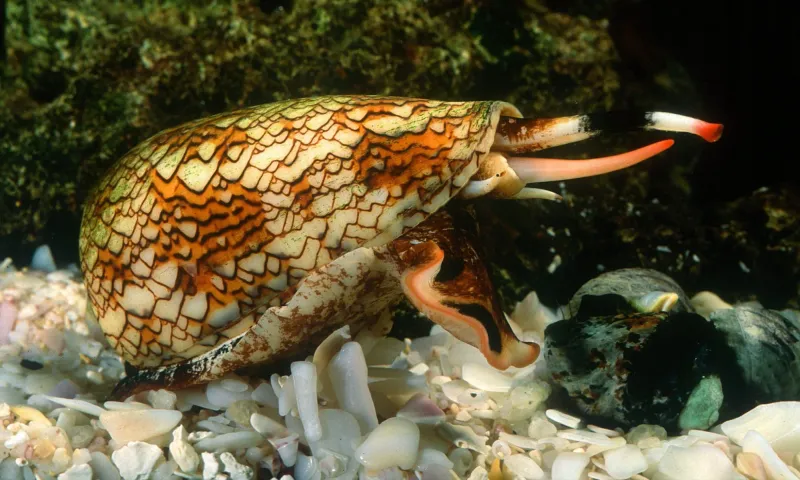
Beneath the waves, the cone snail is both beautiful and deadly. Known for their intricately designed shells, these marine mollusks possess a venomous harpoon capable of delivering a potent sting. Their toxins can immobilize prey almost instantly, making them effective hunters.
While they are not aggressive towards humans, accidental stings can occur if they are handled carelessly. Their venom has even been studied for potential medical applications. Though small in size, the cone snail embodies the delicate balance of beauty and danger found in the ocean’s depths.
Saltwater Crocodile
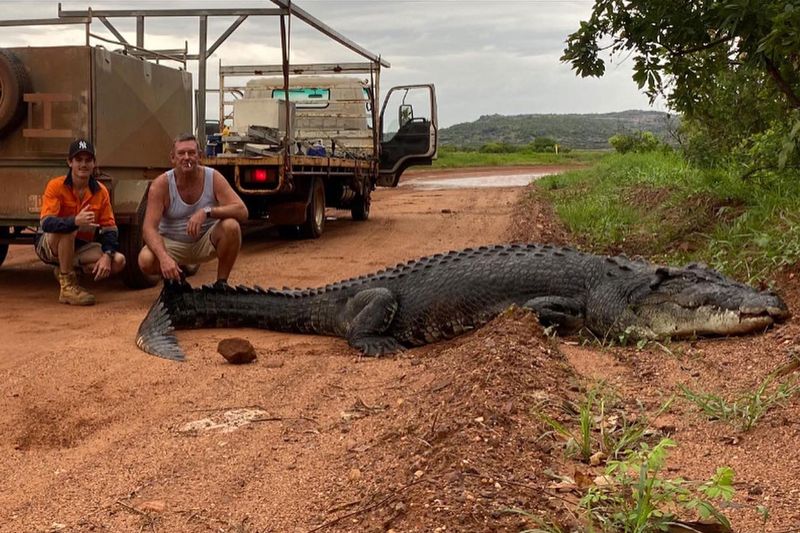
In the warm waters of northern Australia, the saltwater crocodile is a stealthy predator. These reptiles are the largest of their kind, capable of growing over 20 feet long. Their powerful jaws and stealthy hunting technique make them formidable.
Crocodiles are known for their patience, often lurking unseen before striking. While attacks on humans are rare, they do occur, especially if the crocodile feels threatened. Safety measures and local knowledge are key in crocodile-infested areas. Despite their danger, these ancient reptiles are an important part of their ecosystem.
Cassowary
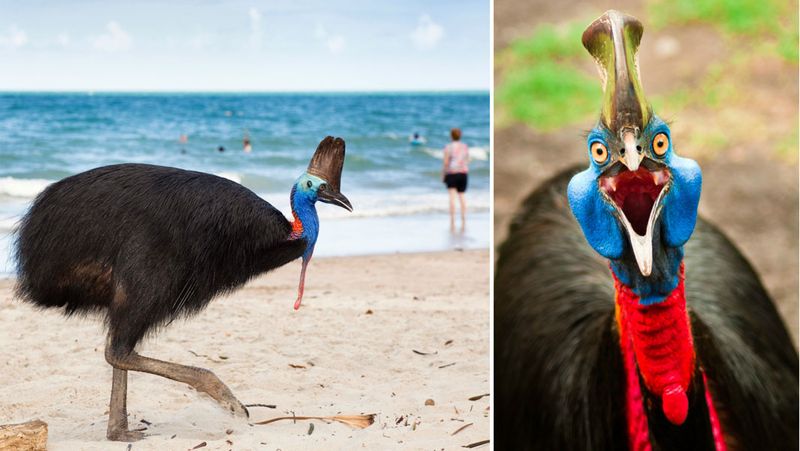
Striding through the dense rainforests of Papua New Guinea and Australia, the cassowary is a bird like no other. Known for its striking appearance, the cassowary sports a unique bony casque atop its head. While typically shy, if threatened, they can deliver powerful kicks with their dagger-like claws.
Cassowaries play a vital role in seed dispersal, contributing to forest health. Human interactions are uncommon but can be dangerous. Conservation efforts help protect their habitats and ensure these magnificent birds continue to thrive. The cassowary’s stealth and beauty are as remarkable as its potential danger.
Blue-Ringed Octopus
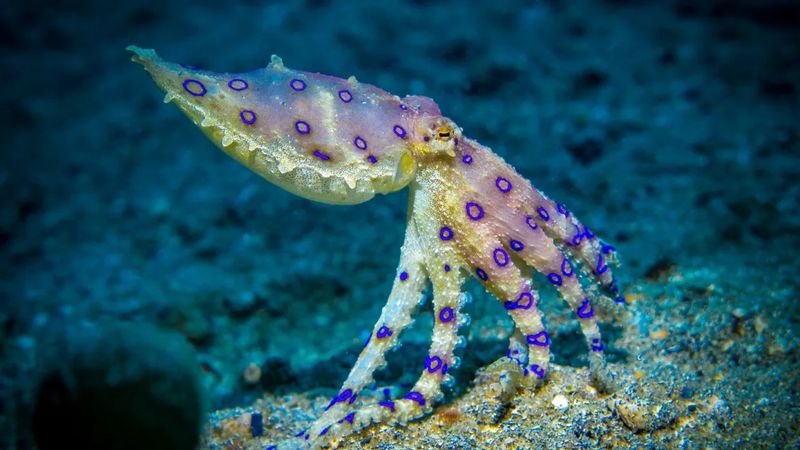
Hiding among the coral reefs, the blue-ringed octopus is a tiny marvel with a deadly secret. Its vibrant blue rings are a warning; this small creature packs a lethal punch with its venom. Despite its size, its toxins can cause paralysis and even be fatal.
Blue-ringed octopuses are shy and only display their rings when threatened. They primarily feed on small crustaceans and are not aggressive towards humans. Awareness and respect for their habitat are crucial in preventing accidents. Their intricate beauty and toxic capabilities make them a wonder of the marine world.
Black Mamba
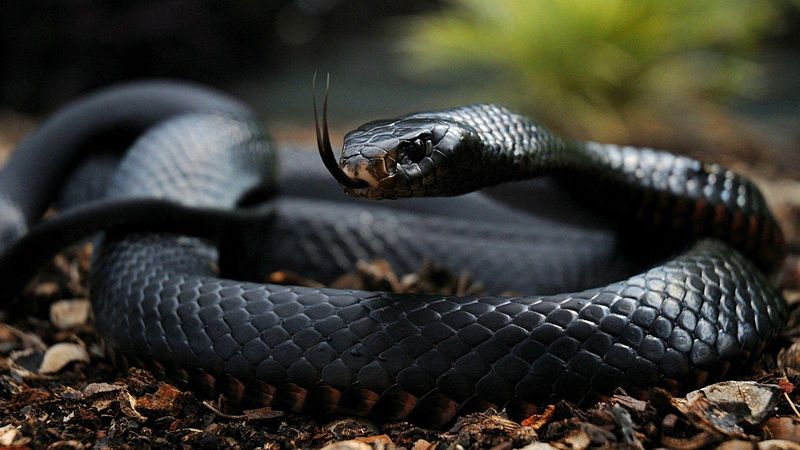
In the African savannah, the black mamba is both feared and revered. Known for its speed and potent venom, this snake can deliver a fatal bite if provoked. Despite its ominous name, the black mamba is shy and prefers to avoid confrontation.
They are highly adaptable, thriving in various environments from grasslands to forests. Human encounters are rare but can be deadly without prompt medical attention. Conservation and education efforts help mitigate the risks. The black mamba’s grace and potential danger are as striking as its sleek, dark appearance.
Pufferfish
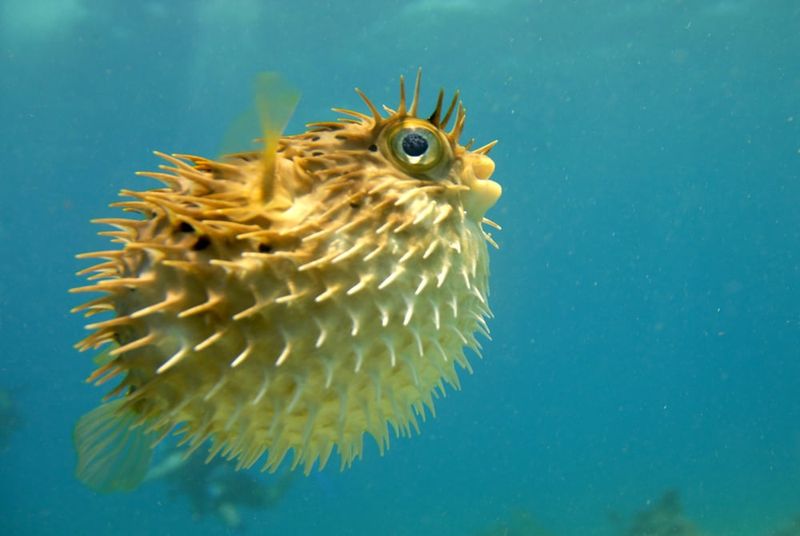
In the vibrant waters of tropical seas, the pufferfish is both amusing and perilous. Known for their ability to inflate into a spiky ball, they possess a powerful neurotoxin called tetrodotoxin. While they are generally not aggressive, their toxin can be deadly if consumed.
Pufferfish are a delicacy in some cultures, requiring careful preparation by skilled chefs. Their unique defense mechanism fascinates marine biologists worldwide. Despite their potential danger, they are often admired for their quirky appearance and behaviors. Swimming cautiously near these fish ensures both human and marine safety.
Lion
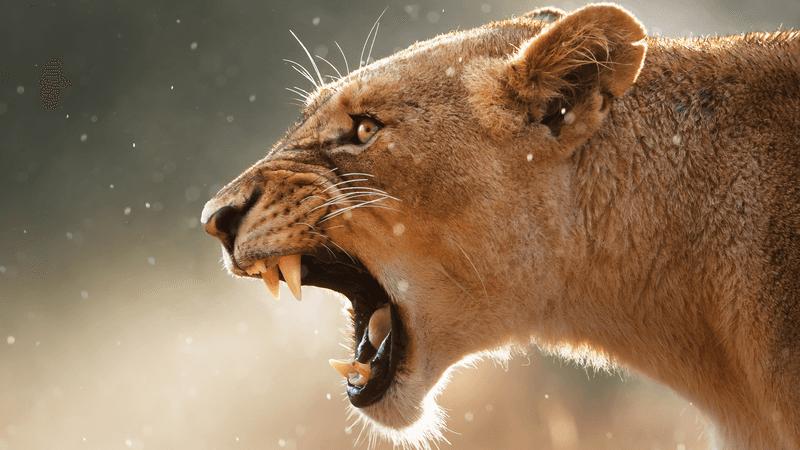
The lion, often called the “King of the Jungle,” roams the African savannah with an air of majesty. These big cats are apex predators, with powerful builds and keen hunting skills. While they are capable of hunting large prey, they generally avoid humans unless provoked.
Lions live in social groups called prides, exhibiting complex social behaviors. They play a crucial role in maintaining the ecological balance. Human-lion conflicts usually arise due to habitat loss and encroachment. Conservation efforts aim to protect these iconic creatures and their habitats.
Tiger
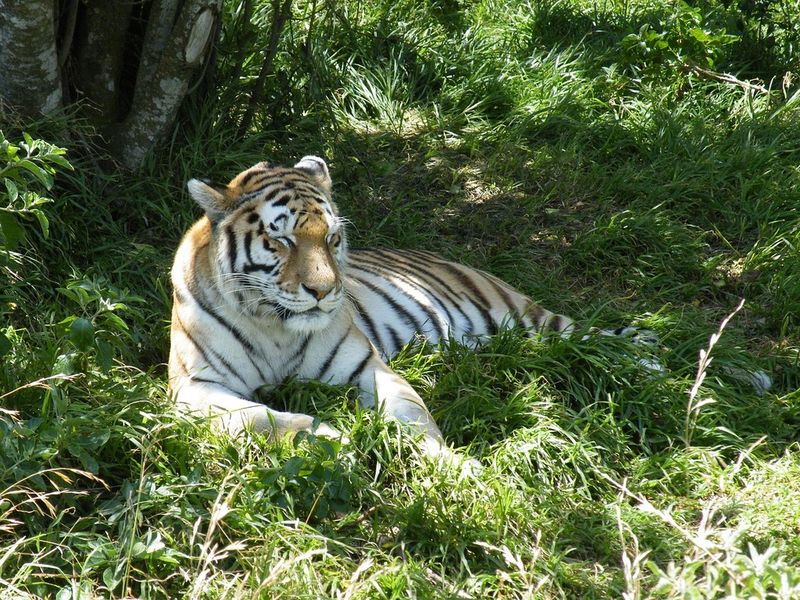
With its striking stripes, the tiger is a powerful symbol of the wild. Found in Asia’s dense jungles, these solitary hunters are both beautiful and deadly. Tigers are apex predators, preferring to hunt large mammals.
They are elusive, often avoiding human contact. However, habitat loss has brought them closer to human settlements, leading to potential conflicts. Efforts to conserve their habitats are crucial for their survival. Despite their fearsome reputation, tigers are more interested in their natural prey than humans, embodying the delicate balance between predator and environment.
Leopard
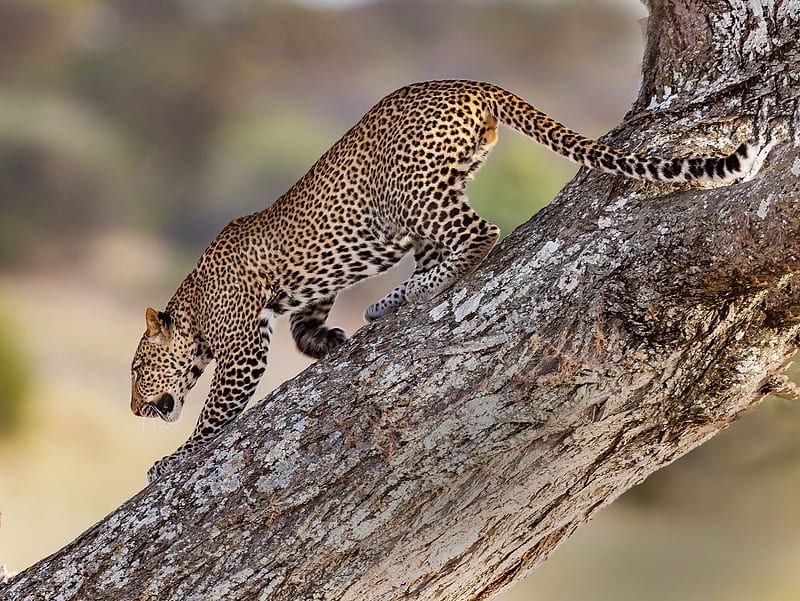
The leopard is a master of stealth and adaptability, thriving in various environments from savannahs to forests. With their spotted coats, they are skilled hunters, capable of taking down prey much larger than themselves. Leopards are known for their ability to climb trees, often dragging their kills into branches for safety.
While they can be dangerous, attacks on humans are rare. Leopards prefer to avoid confrontation, slipping away silently into the night. Conservation efforts are in place to protect their habitats and ensure their survival. Their grace and agility are matched by few in the animal kingdom.
Wolverine
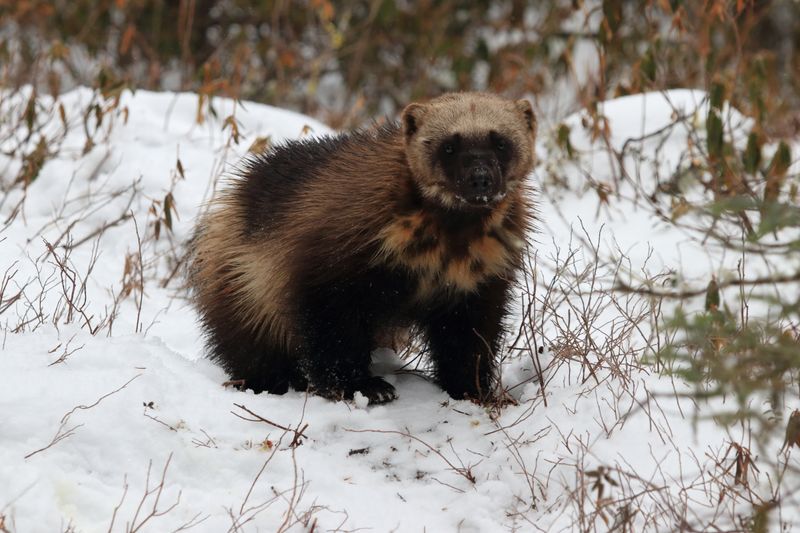
In the remote forests of North America, the wolverine is a creature of mystery and strength. Despite its small size, it possesses incredible power and tenacity. Wolverines are solitary animals, known for their fierce nature and ability to take down prey much larger than themselves.
They are elusive, often avoiding human contact. Their strength and determination are legendary, earning them a reputation as a formidable adversary. Conservation efforts focus on protecting their habitats from encroachment. While they can be dangerous if provoked, wolverines are a testament to the wild’s untamed spirit.
Crocodile Monitor
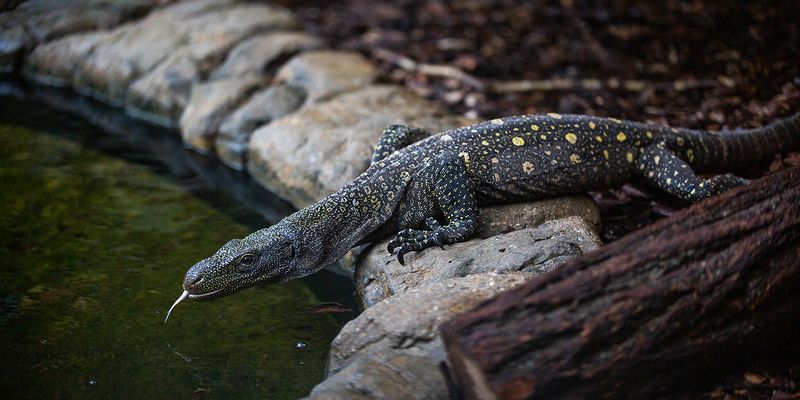
In the lush forests of Papua New Guinea, the crocodile monitor is both a marvel and a menace. As one of the longest lizards in the world, it possesses a combination of agility and power. These reptiles are arboreal, spending much of their time in trees.
Crocodile monitors are carnivorous, feeding on birds and small mammals. Human interactions are rare, as they tend to avoid populated areas. Their striking appearance and elusive nature make them a subject of fascination for herpetologists. While they have the potential to be dangerous, they are more interested in their natural prey.
Hyena
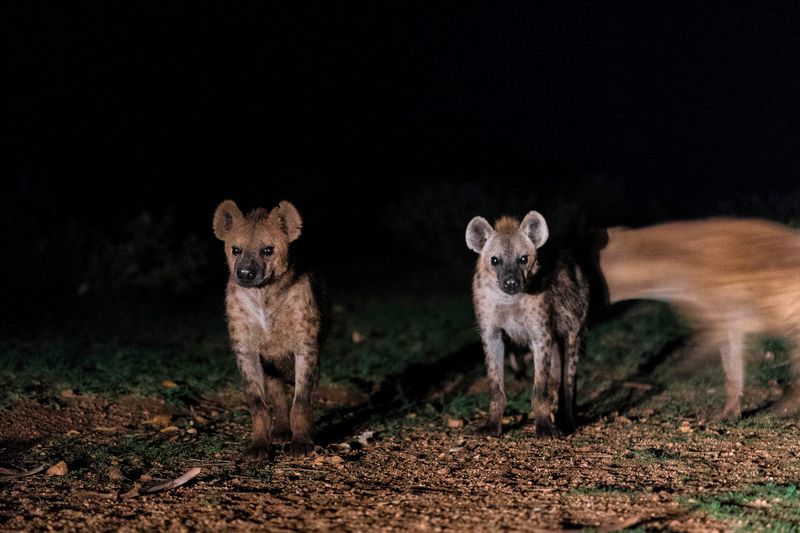
Often misunderstood, the hyena is a creature of complexity and adaptability. Known for their distinctive laugh-like calls, hyenas are skilled hunters and scavengers. They play a crucial role in their ecosystems, cleaning up carrion and hunting in packs.
Hyenas are social animals, living in clans with strict social hierarchies. While they can be aggressive when threatened, they generally avoid human interaction. Conservation efforts aim to protect their habitats and ensure their continued survival. The hyena’s intelligence and social complexity make them fascinating members of the animal kingdom.
Tasmanian Devil
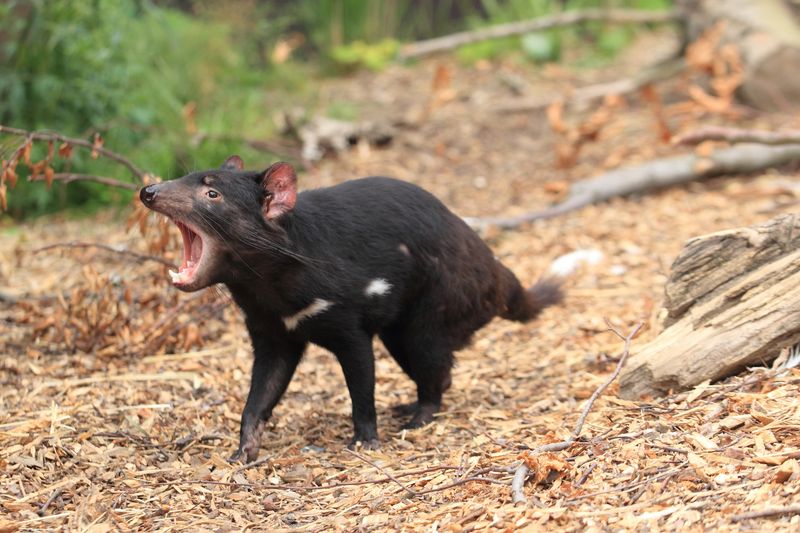
In the forests of Tasmania, the Tasmanian devil is both feared and revered. Known for their ferocious feeding habits and spine-chilling screeches, these marsupials are powerful for their size. They primarily feed on carrion, using their keen senses to locate food.
Tasmanian devils are nocturnal, often avoiding human contact. Conservation efforts have been implemented to protect them from disease threats. Despite their fearsome demeanor, they play a vital role in their ecosystem. The Tasmanian devil’s tenacity and resilience are as remarkable as their unique appearance.
European Badger
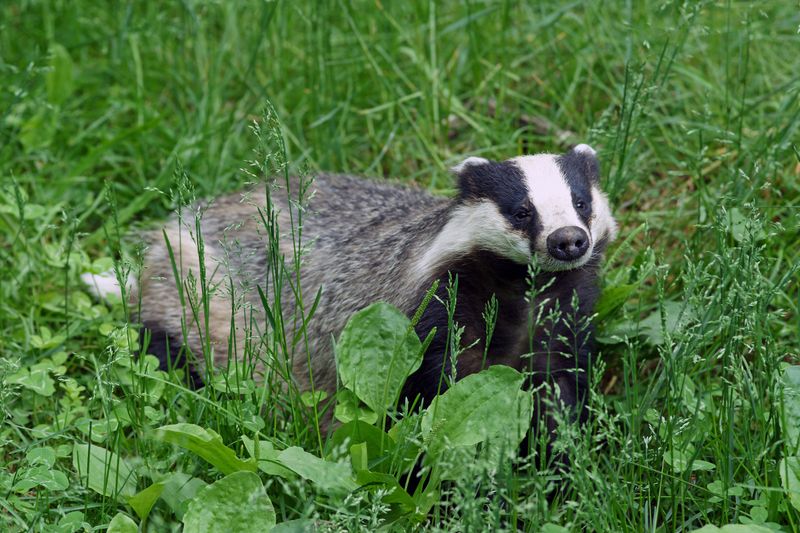
With its striking black and white facial markings, the European badger is a familiar sight in the woodlands of Europe. Known for their burrowing abilities, they create extensive underground homes called setts. Badgers are omnivorous, feeding on a variety of foods including earthworms and fruits.
While generally shy, badgers can be fierce when threatened. They live in social groups, exhibiting complex social behaviors. Conservation efforts focus on protecting their habitats from development. The European badger’s resourcefulness and adaptability make them a beloved feature of the countryside.
Brown Bear
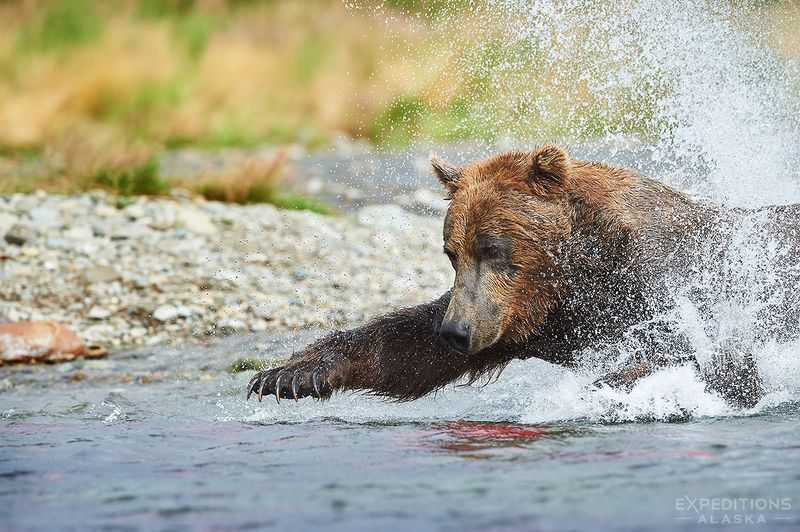
In the wilds of Alaska, the brown bear is both respected and admired. Known for their strength and intelligence, these bears are skilled fishermen, often seen catching salmon during the spawning season. Brown bears are omnivorous, with varied diets that include berries and fish.
While they can be aggressive when protecting their young or food, they generally avoid humans. Conservation efforts aim to maintain their habitats and ensure their survival. The brown bear’s power and majesty are as captivating as their role in the ecosystem.
Gorilla
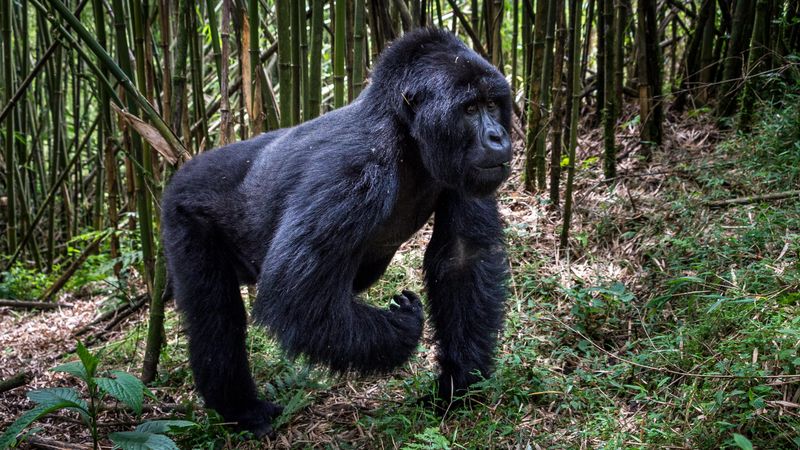
In the lush jungles of Africa, the gorilla embodies strength and gentleness. With their muscular builds and expressive faces, gorillas are awe-inspiring creatures. They live in close-knit family groups, displaying a range of emotions and social behaviors.
Gorillas are primarily herbivorous, feeding on leaves and fruit. Human-gorilla conflicts are rare, typically stemming from habitat loss. Conservation efforts focus on protecting their habitats and promoting coexistence. The gorilla’s gentle nature and intelligence make them a symbol of the wild’s beauty and complexity.
Jaguar
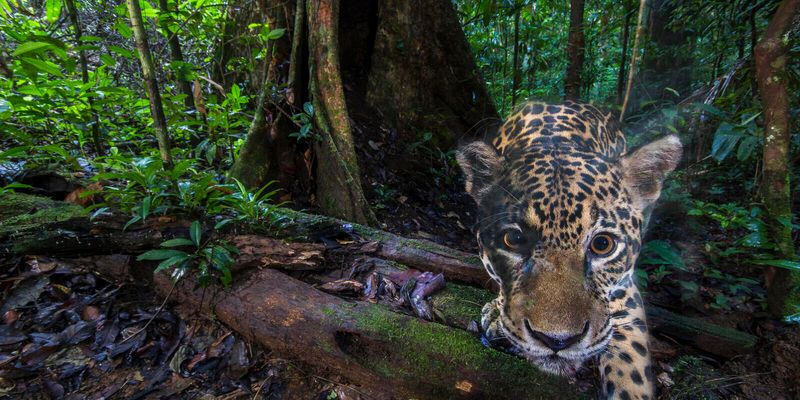
In the dense Amazon rainforest, the jaguar is both a predator and a symbol of power. With their spotted coats and powerful builds, jaguars are adept hunters. They are solitary animals, often hunting at night.
Jaguars play a crucial role in their ecosystems, maintaining the balance of prey populations. While they can be dangerous, attacks on humans are rare. Conservation efforts focus on protecting their habitats from deforestation. The jaguar’s strength and beauty are as remarkable as their role in the wild.
Giant Anteater
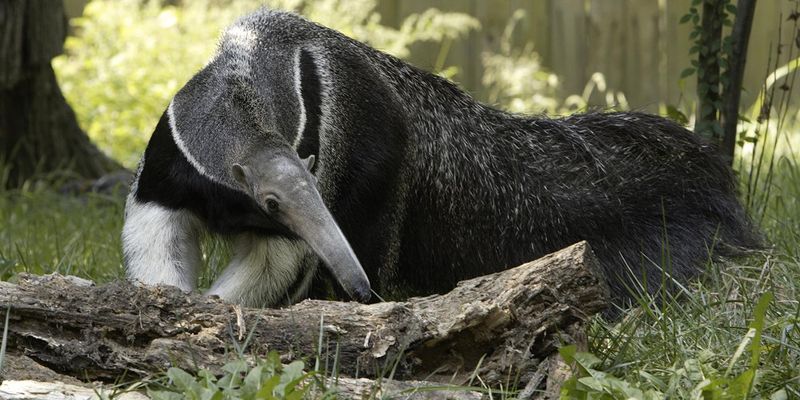
With a snout longer than its head, the giant anteater is a remarkable creature of the South American plains. Its tongue can extend up to two feet, helping it consume thousands of ants and termites daily. Despite its diet, this insectivore poses a threat with its formidable claws.
Capable of fending off predators, the anteater’s claws can inflict serious harm if the animal feels threatened. Its demeanor is generally solitary and non-aggressive, preferring to avoid confrontations.
Did you know? The giant anteater walks on its knuckles to protect its claws, an adaptation that highlights its unique lifestyle.

